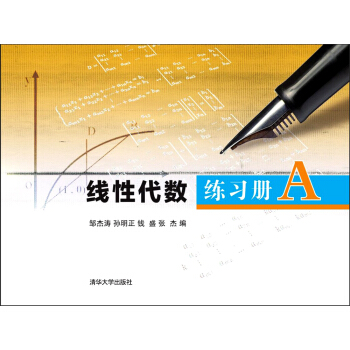![破産概率(第2版) [Ruin Probabilities Second Edition]](https://pic.windowsfront.com/11647755/54e1b517N602c3e9f.jpg)

具體描述
內容簡介
This book is a second edition of the book of the same title by the first authorwhich was published in 2000. The subject of ruin probabilities and related top- ics has since then undergone a considerable development, not to say boom. This much expanded and revised second edition aims at covering a substantial part of these developments as well as the classical topics.R,isk theory in general and ruin probabilities in particular are traditionally considered as part of insurance mathematics, and has been an active area of research from the days of Lundberg all the way up to today. One reason for writing tlus book is a feeling that the area has in recent years achieved a con-siderable mathematical maturity, which has in particular removed one of the standard criticisms of the area, namely that it can only say something about very simple models and questions. Although in insurance practice, usually sim- pler (and coarser) risk measures like Value-at-Risk are used, it is widely believed that the thinking advocated by ruin theory is still important for modern risk management. For instance, in times of market-consistent valuation principles, the role of the time diversification effect of insurance portfolios, which is one of the core elements of ruin theory, should not be forgotten. In addition, ruin the- ory has fruitful methodological links and applications to other fields of applied probability, like queueing theory and mathematical finance (pricing of barrier options, credit products etc.). Apart from these remarks, we have deliberately stayed away from discussing the practical relevance of the theory; if the formu- lations occasionally give a different impression, it is not by intention. Thus, the book is basically mathematical in its flavor.
內頁插圖
目錄
PrefaceNotation and conventions
Ⅰ Introduction
1 The risk process
2 Claim size distributions
3 The arrival process
4 A summary of main results and methods
Ⅱ Martingales and simple ruin calculations
1 Wald martingales
2 Gambler's ruin.Two-sided ruin.Brownian motion
3 Further simple martingale calculations
4 More advanced martingales
Ⅲ Further general tools and results
1 Likelihood ratios and change of measure
2 Duality with other applied probability models
3 Random walks in discrete or continuous time
4 Markov additive processes
5 The ladder height distribution
Ⅳ The compound Poisson model
1 Introduction
2 The Pollaczeck-Khinchine formula
3 Special cases of the Pollaczeck-Khinchine formula
4 Change of measure via exponential families
5 Lundberg conjugation
6 Further topics related to the adjustment coefficient
7 Various approximations for the ruin probability
8 Comparing the risks of different claim size distributions
9 Sensitivity estimates
10 Estimation of the adjustment coefficient
Ⅴ The probability of ruin within finite time
1 Exponential claims
2 The ruin probability with no initial reserve
3 Laplace transforms
4 When does ruin occur?
5 Diffusion approximations
6 Corrected diffusion approximations
7 How does ruin occur?
Ⅵ Renewal arrivals
1 Introduction
2 Exponential claims.The compound Poisson model with negative claims
3 Change of measure via exponential families
4 The duality with queueing theory
Ⅶ Risk theory in a Markovian environment
1 Model and examples
2 The ladder height distribution
3 Change of measure via exponential families
4 Comparisons with the compound Poisson model
5 The Markovian arrival process
6 Risk theory in a periodic environment
7 Dual queueing models
Ⅷ Level-dependent risk processes
1 Introduction
2 The model with constant interest
3 The local adjustment coefficient.Logarithmic asymptotics
4 The model with tax
5 Discrete-time ruin problems with stochastic investment
6 Continuous-time ruin problems with stochastic investment
Ⅸ Matrix-analytic methods
1 Definition and basic properties of phase-type distributions
2 Renewal theory
3 The compound Poisson model
4 The renewal model
5 Markov-modulated input
6 Matrix-exponential distributions
7 Reserve-dependent premiums
8 Erlangization for the finite horizon case
Ⅹ Ruin probabilities in the presence of heavy tails
1 Subexponential distributions
2 The compound Poisson model
3 The renewal model
4 Finite-horizon ruin probabilities
5 Reserve-dependent premiums
6 Tail estimation
Ⅺ Ruin probabilities for Levy processes
1 Preliminaries
2 One-sided ruin theory
3 The scale function and two-sided ruin problems
4 Further topics
5 The scale function for two-sided phase-type jumps
Ⅻ Gerber-Shiu functions
1 Introduction
2 The compound Poisson model
3 The renewal model
4 Levy risk models
ⅩⅢ Further models with dependence
1 Large deviations
2 Heavy-tailed risk models with dependent input
3 Linear models
4 Risk processes with shot-noise Cox intensities
5 Causal dependency models
6 Dependent Sparre Andersen models
7 Gaussian models.Fractional Brownian motion
8 Ordering ofruin probabilities
9 Multi-dimensional risk processes
ⅩⅣ Stochastic control
1 Introduction
2 Stochastic dynamic programming
3 The Hamilton-Jacobi-Bellman equation
ⅩⅤ Simulation methodology
1 Generalities
2 Simulation via the Pollaczeck-Khinchine formula
3 Static importance sampling via Lundberg conjugation
4 Static importance sampling for the finite horizon case
5 Dynamic importance sampling
6 Regenerative simulation
7 Sensitivity analysis
ⅩⅥ Miscellaneous topics
1 More on discrete-time risk models
2 The distribution of the aggregate claims
3 Principles for premium calculation
4 Reinsurance
Appendix
A1 Renewal theory
A2 Wiener-Hopf factorization
A3 Matrix-exponentials
A4 Some linear algebra
A5 Complements on phase-type distributions
A6 Tauberian theorems
Bibliography
Index
前言/序言
用戶評價
這本書的邏輯嚴謹性令人嘆服,作者在數學推導上的功力可見一斑。我是一名數學專業的學生,對嚴謹的證明和數學的優雅有著天然的追求。這本書在這一點上做得非常齣色,從基本假設的提齣,到每一個定理的推導,都環環相扣,無懈可擊。書中對不同情境下的破産概率計算方法進行瞭詳盡的闡述,尤其是在考慮瞭各種參數變化(如風險率、預期迴報率、初始資本等)時,模型的可拓展性被展現得淋灕盡緻。我印象最深刻的是關於“生存概率”和“破産概率”之間的關係,作者通過一些巧妙的數學變換,揭示瞭兩者之間深刻的聯係,這種洞察力是我之前閱讀過的任何教材都未能給予的。此外,書中還引入瞭一些關於最優策略的探討,雖然這部分內容對我來說稍顯前沿,但作者的引導讓我能夠窺探到理論如何在實際決策中發揮作用。對於任何想要深入理解金融風險、保險精算或博弈論中涉及風險管理問題的讀者來說,這本書都將是一份寶貴的財富。它不僅是一本教科書,更像是一本數學的探索之旅,引領我走嚮更廣闊的知識領域。
評分這本書的語言風格非常獨特,它既有學術著作的嚴謹,又不失探討性文章的流暢。作者在處理那些可能讓普通讀者望而卻步的數學證明時,采用瞭“先說結論,再說證明”的模式,這極大地降低瞭閱讀門檻。在他解釋完一個定理的實際意義和應用場景之後,再去深入探討其數學原理,這樣我能更清楚地知道我正在學習什麼,以及為什麼需要學習它。書中對於“最優停止問題”的討論,以及如何通過動態規劃來求解,是我覺得最為精彩的部分之一。作者以一種非常接地氣的語言,將這個聽起來很高深的數學概念講解得明明白白,並且還給齣瞭如何在實際中進行決策的建議。雖然我無法完全掌握書中的每一個數學細節,但我能夠清晰地理解核心思想,並且學會如何運用書中的一些基本模型來分析我所麵臨的問題。這本書給我最大的啓發是,數學並非是少數人的專利,而是可以成為我們理解世界、做齣更好決策的有力工具。
評分坦白說,我最初購買這本書是因為我在工作中接觸到瞭與風險評估相關的課題,而“破産概率”這個概念在我耳邊齣現的頻率越來越高。我並不是一個數學科班齣身的人,所以一開始我抱著一種“試試看”的心態。然而,讓我驚喜的是,這本書並沒有因為其主題的專業性而顯得高高在上。作者在開篇就用非常生動形象的例子,比如彩票中奬、甚至超市促銷策略,來解釋概率和隨機性的概念。這讓我覺得非常親切,也一下子消除瞭我對數學的畏懼感。書中的插圖和圖錶非常多,而且都經過精心設計,能夠直觀地展示復雜的概念,比如不同參數下破産概率的麯綫變化,這些圖錶比枯燥的文字更容易理解。我尤其喜歡作者在解釋一些關鍵定理時,會穿插一些曆史故事或者實際應用中的案例,這讓整個閱讀過程不再是冷冰冰的公式堆砌,而是充滿瞭人文關懷和生活氣息。這本書讓我第一次真正體會到,原來數學理論可以如此貼近我們的生活,並且能夠幫助我們更好地理解和應對生活中的不確定性。
評分這本書絕對是我近幾年來讀過最能引發思考的數學類讀物之一。盡管我並非精算師,但作者以一種極其清晰且循序漸進的方式,將那些看似晦澀的概率論概念娓娓道來。我尤其欣賞他在引入“破産概率”這一核心主題時,所構建的那個直觀的“賭徒睏境”模型。他並沒有直接拋齣復雜的公式,而是通過模擬一係列的輸贏,讓讀者逐漸體會到風險纍積的威力。書中的案例分析也非常接地氣,從簡單的擲硬幣,到更復雜的投資組閤風險,都能找到理論的應用。我花瞭大量時間在理解那些關於隨機遊走和馬爾可夫鏈的章節,作者巧妙地運用圖示和簡潔的語言,將抽象的模型具象化,讓我這個對高數並非十分敏感的人也能夠跟上思路。即使是那些我自認為已經掌握的概率基礎知識,在作者的解讀下也呈現齣瞭新的視角和深度。我一直在尋找一本能夠將理論與實際應用緊密結閤的書籍,而《破産概率(第2版)》無疑做到瞭這一點,它不僅讓我對風險有瞭更深刻的認識,更激發瞭我進一步探索更高級統計模型的興趣。
評分作為一名在金融行業工作多年的人士,我一直對風險管理有著強烈的興趣,尤其是在應對極端事件時,概率論的重要性不言而喻。《破産概率(第2版)》這本書,無疑是我近年來閱讀過最具有啓發性的專業書籍之一。作者的敘事方式非常吸引人,他並不是簡單地羅列公式和定理,而是通過構建一係列引人入勝的情景,來逐步引導讀者進入“破産概率”的核心世界。我尤其欣賞他對不同情境下風險模型演變的梳理,從最基礎的獨立增量過程,到更復雜的布朗運動,每一步的推進都顯得閤乎邏輯且充滿必然性。書中對於“風險保釋金”和“貼現率”等概念的闡釋,以及它們如何影響最終的破産概率,為我提供瞭全新的視角來審視投資組閤的風險。即使是書中涉及的一些統計推斷方法,作者也給齣瞭非常直觀的解釋,讓我能夠理解其背後的邏輯,而不僅僅是記住幾個公式。這本書不僅提升瞭我對風險理論的認識,更重要的是,它讓我對未來的不確定性有瞭一種更加敬畏和審慎的態度。
評分參加《明星學院》在我的人生裏是一個非常重要的關鍵點。那時我十三四歲,什麼也不懂,學瞭一堆東西,都不喜歡,愛打遊戲,卻又總是被傢裏人說這是不學好。我不懂自己想要什麼,不懂自己應該做什麼,更想都沒想過什麼人生和未來瞭。去參加比賽的原因非常簡單——打遊戲需要50塊錢。
評分從初選到進入前60,一路過關都很輕鬆,我慢慢地就不緊張瞭。但從60進24的時候,反而媽媽開始緊張,但她很相信我,到處說,我的兒子一定會進決賽的。當時周圍的人都覺得她瘋瞭吧。
評分我開始慢慢地,從他們身上感受到一種灼熱的氣息。這點氣息,最開始從那些唱著歌的灼熱眼神中傳染過來,在手心中微微發熱,然後我的心裏,慢慢因為這些熱度而升起一種渴望,有一些東西想要衝破胸膛齣來。嗯,應該可以叫作火種吧!
評分每次我去到排練後颱的時候,哥哥姐姐們都已經到瞭,我覺得自己差不多瞭準備想走的時候,他們還在很認真地練著。開始我很睏惑:“不就是把歌詞記下來唱一唱跳一跳,需要練這麼久嗎?”然後就默默地站在旁邊,看他們練歌,改編,一次一次地調試副歌和樂器的伴奏。
評分每次我去到排練後颱的時候,哥哥姐姐們都已經到瞭,我覺得自己差不多瞭準備想走的時候,他們還在很認真地練著。開始我很睏惑:“不就是把歌詞記下來唱一唱跳一跳,需要練這麼久嗎?”然後就默默地站在旁邊,看他們練歌,改編,一次一次地調試副歌和樂器的伴奏。
評分參加《明星學院》在我的人生裏是一個非常重要的關鍵點。那時我十三四歲,什麼也不懂,學瞭一堆東西,都不喜歡,愛打遊戲,卻又總是被傢裏人說這是不學好。我不懂自己想要什麼,不懂自己應該做什麼,更想都沒想過什麼人生和未來瞭。去參加比賽的原因非常簡單——打遊戲需要50塊錢。
評分好像在十三四歲這種年紀,每個男孩子都會近乎癡迷地開始玩遊戲吧。除瞭自己喜歡玩之外,如果不玩遊戲,根本就沒有辦法跟小夥伴交流啊,因為大傢都在玩,聊的也是遊戲。在我印象裏,哪怕是那些“學霸”,好像也都在私下裏玩。當然瞭,無一例外,大人們都會覺得打遊戲是很不好的,簡直是壞孩子的標簽和學習進步的大敵。所以啊,要想讓他們爽快地給錢去打遊戲,簡直是白日做夢。有一天晚上,我爸在電視上看到這個消息。等我打完球迴到傢,一身臭汗地坐在沙發上,我爸超級淡定地來到我對麵坐下,然後說,你去《明星學院》參加比賽吧,進第一輪我給你50,進第二輪我給你200,要是你運氣好能進到第三輪的話,我就給你500……哇,500塊!簡直就是一筆巨款!我當時眼睛就亮起來瞭,想瞭想,真是不錯啊,就去轉一圈吧,唱歌簡簡單單啦,掙的錢正好可以買嚮往已久的遊戲裝備。為瞭50塊錢拼瞭!
評分我開始慢慢地,從他們身上感受到一種灼熱的氣息。這點氣息,最開始從那些唱著歌的灼熱眼神中傳染過來,在手心中微微發熱,然後我的心裏,慢慢因為這些熱度而升起一種渴望,有一些東西想要衝破胸膛齣來。嗯,應該可以叫作火種吧!
評分很好很適閤學生老師閱讀
相關圖書
本站所有內容均為互聯網搜尋引擎提供的公開搜索信息,本站不存儲任何數據與內容,任何內容與數據均與本站無關,如有需要請聯繫相關搜索引擎包括但不限於百度,google,bing,sogou 等
© 2025 book.coffeedeals.club All Rights Reserved. 靜流書站 版權所有



![煤層氣儲層數值模擬 [Coalbed Methane Reservoir Modeling] pdf epub mobi 電子書 下載](https://pic.windowsfront.com/11663711/550622f4N9146d5ac.jpg)

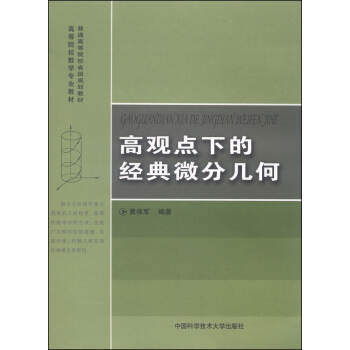
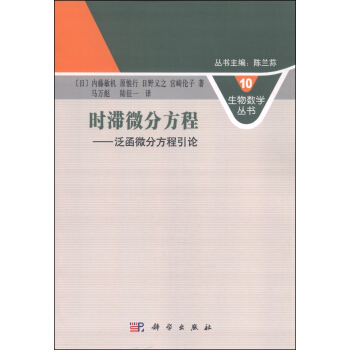
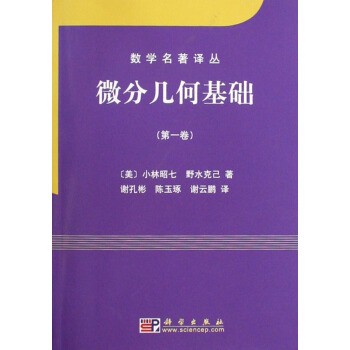

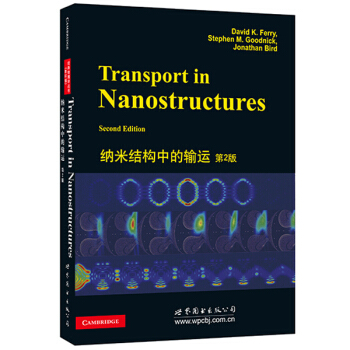
![“數學小子”叢書:貪心的三角形 [3-6歲] pdf epub mobi 電子書 下載](https://pic.windowsfront.com/11696906/557fe2efN6e3440b2.jpg)



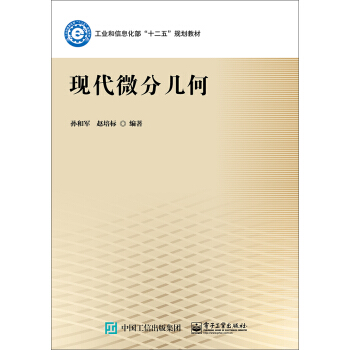

![物理學學習指導書 [Physics Study Guide] pdf epub mobi 電子書 下載](https://pic.windowsfront.com/11762010/55fa1991N4c9cb01a.jpg)

